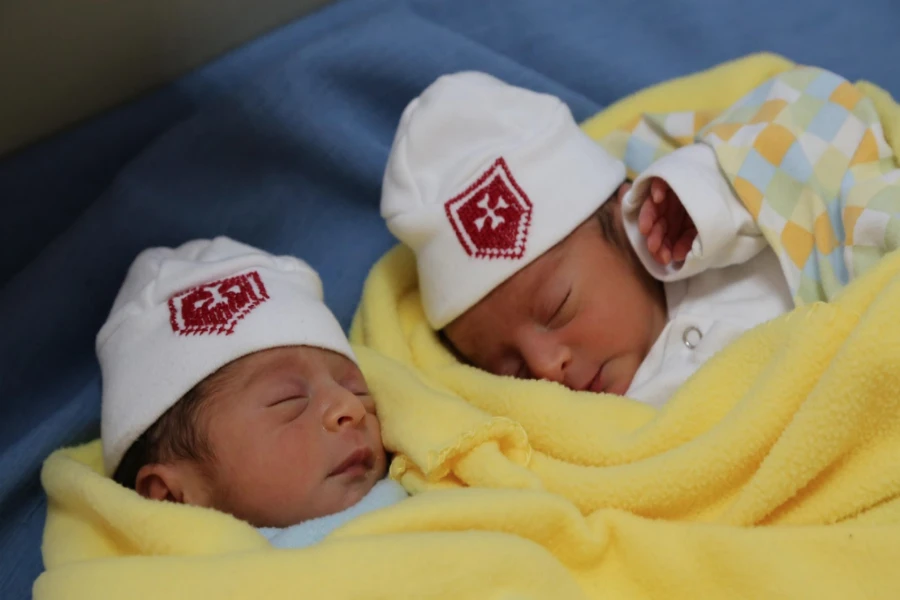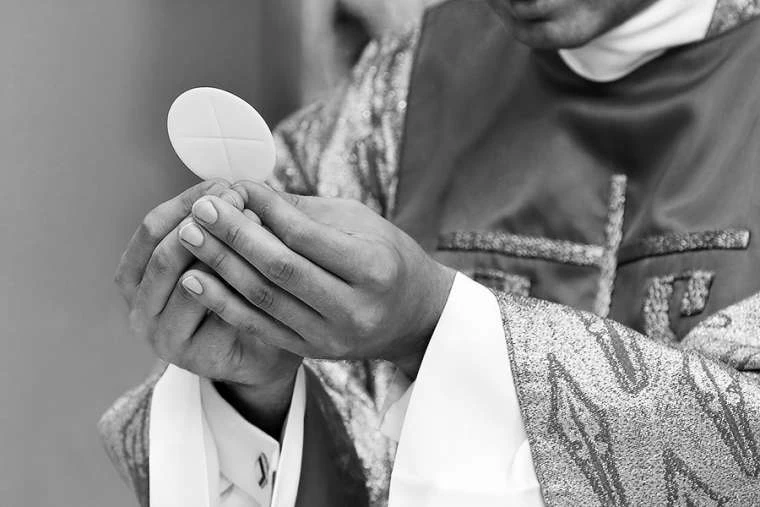
Bethlehem, Palestine, Dec 20, 2018 / 10:34 am (CNA).- For almost two millennia, Christian pilgrims have come to the Church of the Nativity in Bethlehem to pray, remembering the special place where Jesus Christ was born.
A half mile away from the Nativity Church, the Holy Family Hospital of Bethlehem also strives to be a special place for newborn babies, and their families.
“The doors are open to everyone, regardless of creed or need,” Michele Burke Bowe, a hospital board member who is president of the linked Holy Family Hospital of Bethlehem Foundation, told CNA.
“The most important thing to know is that it’s a Catholic teaching hospital that’s 1,500 steps away from the manger where Christ was born.”
Beneath the Church of the Nativity is a large cave network, where Jesus Christ is said to have been born. According to the Gospel of Luke, Joseph and the Virgin Mary had to place Jesus in a manger because there was no room at an inn.
“To me it’s the most beautiful Catholic mission: to be able to say ‘yes, we have room,’ and to be able to take care of those babies and their mothers,” Bowe said.
Bowe, a mother of five and an economist by training, is originally from Washington, D.C. She also serves as an ambassador of the Order of Malta to the State of Palestine.
The Holy Family Hospital of Bethlehem was originally founded as a general hospital in the 1880s by the Daughters of Charity. It was forced to close in the mid-1980s.
Later that decade, it re-opened as a maternity hospital, under the oversight of the Sovereign Military Order of Malta.
The hospital now helps to deliver close to 4,500 babies per year. Most of the mothers are Muslim, while others are Palestinian Christians.
“The demand is just growing. We’re the only hospital that can care for any baby born before 32 weeks,” Bowe said.
The hospital has a capacity of 62 beds, including an 18-bed Neonatal Intensive Care Unit. It is the only health provider for high-risk pregnancies in the Bethlehem district in Palestine’s West Bank.
About ten percent of the hospital’s newborns must go to the NICU, a higher rate than regular hospitals because it accepts all cases with complications or emergencies.
At the same time, the hospital has a very low mortality rate.
“The most important thing is that it’s Catholic and a teaching hospital,” Bowe said. And of course, ‘Catholic’ means that it’s pro-life. Every baby is resuscitated.”
She recounted seeing dangerously low-weight newborns recover and go home with their parents.
“We’re saving a lot of lives. These babies and their mothers, in many cases, just wouldn’t live,” Bowe said.
“It’s just such a miracle,” she added. “Our statistics are much better than you can hope for. I honestly think it’s the Blessed Mother who makes sure that things turn out right.”
At least half of patient costs are subsidized by the Holy Family Hospital Foundation, the Order of Malta and other benefactors.
“It’s very expensive to keep a baby in the NICU for five months,” Bowe said. “It makes no sense economically. But that’s why we’re there: to support people and give hope.”
Partnerships with a refugee camp’s women’s group employs two women to make hats for the newborns, knitted in a traditional Palestinian style.
“They’re very cute white hats,” said Bowe. “The babies are getting a free hat, which this time of year is quite cold. Central heating is rare.”
Any jobs benefit residents of the camp, which suffers from very high unemployment.
“It’s a win-win situation, where the women of the refugee camps are helping the babies of Bethlehem,” said Bowe.
The hospital sells knitted purses to raise awareness and funds for the hospital, while the Order of Malta purchases aprons for its uniform on pilgrimages to Lourdes.
Bowe stressed the hospital’s teaching emphasis, saying it has trained “generations and generations” of medical professionals. In its early years, the hospital worked with Bethlehem University to open a school for midwifery.
The hospital’s staff numbers about 20 consultant and resident doctors, as well as 80 midwives, nurses and other paramedical staff. All of these are Palestinian. Another 140 medical workers trained at the hospital have worked in Palestine over the years.
Bowe said the biggest success of the hospital is its ability to adapt.
Over 20 years ago it launched a vehicle-based mobile medical unit to visit villages in the desert and outlying areas.
“That was very revolutionary,” said Bowe. Over two decades of consistent coverage has had a real impact, compared to communities that are outside of the hospital’s catchment area, limited by financial resources.
“Their children are having dental issues, they’re having growth-stunting,” Bowe continued. “They’re the same demographic. The difference is our clinic.”
The hospital incorporates teaching into every visit. Mothers are taught how to care for their children, what pregnancy involves, and more.
“The teaching in this village has made a huge difference,” said Bowe.
Young newly married women often come to the hospital with their mothers or mothers-in-law, who are themselves women in need of health care.
“We realized that these mothers and mothers-in-law hadn’t been to the doctor since they delivered their last baby. No cancer screening, nothing,” Bowe said. “You can have a lot of issues associated with that. So we opened up a clinic that we call the Well-Woman Clinic.”
At first the clinics had very few visits because such visits were not part of the culture. Hospital staff then began going to refugee camps, church groups, and the women’s union to teach women about preventive care, menopause and health issues that come with age but can be fixed.
“Now, we have hundreds of women coming to the clinic,” Bowe reported. “Some of them need laparoscopic surgery or conventional surgery, and we do those. We take women who are confined very close to home, close to the restroom. We give them a surgery or treat them. Then they can restore their dignity and go out to work or take care of the children.”
“I’m really impressed with the way the hospital doesn’t rest on its laurels. It’s constantly thinking of new ways to serve the people,” said Bowe.
The inter-religious nature of the hospital is another characteristic.
“When you put people together in the hospital, their goals are to provide the best care, the best, life-saving pro-life care, to the mothers and the babies,” she said.
“We employ Christians and Muslims. It’s a very high-quality workplace environment where they can learn together and serve together,” Bowe said. At a time of significant stratification between religions, the hospital is “a place where this isn’t even an issue.”
“We have a Christmas party and Christmas trees,” Bowe said. “We’re a Catholic hospital: we have crucifixes and icons and statues of the Blessed Mother and the Holy Family. But we also have a Ramadan Party.”
For Bowe, the biggest lesson is Christians’ and Muslims’ common roots in Abrahamic faith.
“We’re people of the book,” she said. “In my experience, having been going there since the 70s, we’re really just the same people.”
Bowe has also witnessed some religious crossover, at one of Christianity’s holiest sites.
“When I go to the Church of the Nativity, down into the Grotto to pray, I often see young Muslim women in there,” she said. “They look to be of age that they’re praying for a baby.”
The hospital is now working on an operating theater renovation, extending its training facilities and improving its social services.
If you value the news and views Catholic World Report provides, please consider donating to support our efforts. Your contribution will help us continue to make CWR available to all readers worldwide for free, without a subscription. Thank you for your generosity!
Click here for more information on donating to CWR. Click here to sign up for our newsletter.




Leave a Reply